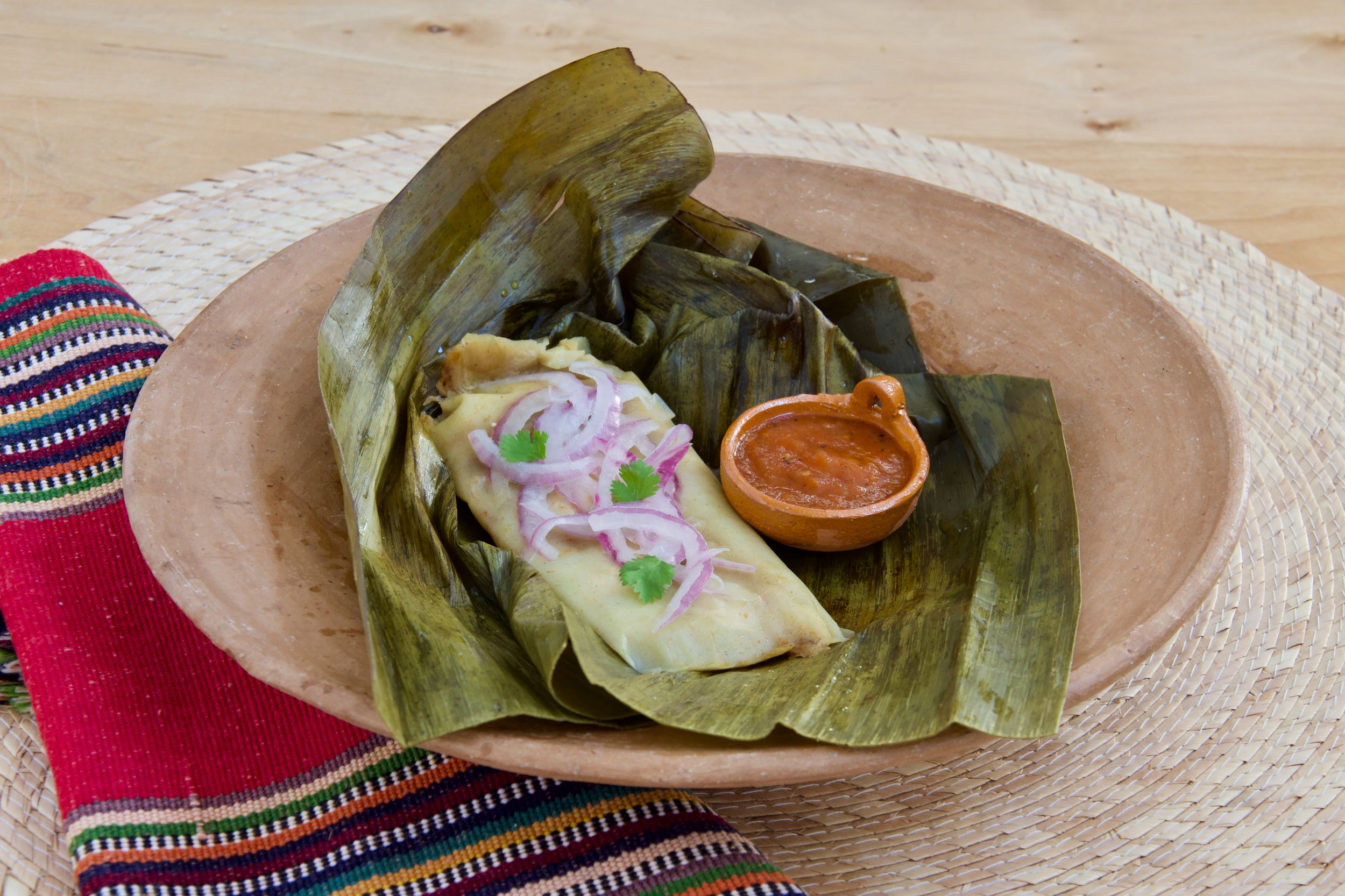After years of Instagram conversations, this Fall I finally met Chef Pepe Hernández in person. Pepe is the owner of Yokot’an, an amazing restaurant in Monterrey (Garza García), México that showcases Chef Pepe’s roots and love of food from his native Tabasco.
If you ever have a chance to go visit, please order an Infladita de Piloncillo, one of the best items on Yokot’an’s menu - it’s a fried puffy tortilla filled with Cochinita Pibil and it is just outrageously good. Pepe made it for my sister’s birthday on our last visit and it is just amazing. We have tried quite a few items off his menu, and everything has been delicious. I particularly remember some Tostones with Cochinita that we devoured in no time, some Enmoladas, one of the Chef’s best and his French Toast, not too sweet but completely decadent. I also remember an Horchata con Café that was really refreshing, something I had never tried before.
But one of the things Chef Pepe is known for are his tamales, and that is what actually gave him his start. Before he opened the restaurant, he used to make tamales and sold them at San Pedro de Pinta, an outdoor market/community event in Garza García. We are so happy he decided to take the leap and open Yokot’an! He just celebrated his 8th Anniversary and I could not be happier for him. He deserves all the success for all the love and hard work he’s put into his restaurant.
As I mentioned before, Pepe and I only knew each other via Instagram. Over the years we had exchanged conversations, and even after eating at his restaurant a few times I had never been able to meet him in person. This time around, I made sure to connect and made a point of visiting when he was going to be there. Pepe is such a kind and talented person and he makes the most gorgeous and delicious food!
We started chatting as if we had known each other forever and when he suggested a collaboration, I did not hesitate. Pepe gave me his famous Tamal recipe and I am so excited to share it with you! I present to you his tamal on a plate that was gifted to me by Pepe. This has been so much fun! Thank you for sharing Chef!
A few notes on this recipe. I have made adaptations because I cannot find fresh nixtamalized masa in Ottawa, so I am using Maseca. If you can find Maseca for Tamales, that is great, but I could not find it this time around. This masa for tamales is very soft, like cake batter. It is better suited to make tamales in banana leaves. The use of oil in the recipe makes it possible to make plant based tamales, if that is something that you are interested in making. I am using Cubanelle pepper as I cannot find Anaheim in Canada.
I have to say, these tamales are delicious and pretty easy to make. You can use any type of filling you want. I think this recipe would make excellent vegan tamales, so I hope you give them a try!
Tamales estilo Tabasco, from Chef Pepe Hernández
Yokot’an
3 1/2 cups Maseca
3 1/2 cups warm water
3/4 cup neutral oil (vegetable, corn, canola, grapeseed) or rendered pork lard
2 2/3 cup chicken or vegetable stock
1/3 cup minced Cubanelle or Anaheim chile
2/3 cup minced white Spanish onion
2 Tbsp kosher salt, or to taste
2 1/2 packages banana leaves, cut into 25 x 30 cm pieces and wiped clean
3 1/2 cups pulled chicken
3 cups mole sauce
To prepare banana leaves, cut them into 25 x 30 cm squares (10 x 12”) approximately, and trim the centre rib of the leaves off. That part will be discarded. Wipe the leaves very well with a damp towel and then place each cut piece over an open flame or on a hot comal to soften them, moving them constantly so they won’t burn. You will see they become pliable and shiny. Repeat until all pieces are done.
In large bowl, combine Maseca and water and knead into a smooth ball. Let rest, covered, while you prepare everything else.
When your mise en place is ready, add oil to masa and knead to combine.
Add chicken stock in 4 additions, mixing as you add liquid every time. You should have a very loose masa that resembles cake batter.
Add Cubanelle pepper, onion and salt and mix well. You are ready to make tamales.
Place one piece of banana leaf in front of you and spoon some masa in the centre (between 1/3 and 1/2 cup). Top with 2 Tbsp chicken and 2 Tbsp mole sauce. If some of your banana leaf pieces are a bit smaller, add less masa to them, to make smaller tamales.
Gather the top and bottom edges and bring them together. Make a couple of folds down (as if you were closing a paper bag) until you reach the filling, then fold the edges in towards the centre, forming a rectangle.
If you want, you can tie with a piece of banana leaf, but I find you don’t really need to tie them. Repeat until all tamales are formed.
Prepare your steamer by filling with water and lining racks with extra pieces of banana leaf.
Layer tamales on racks. I like using my Asian steamer because it has several flat racks - it works great for banana leaf tamales. If you don’t have one, any pot with a steamer rack works. Arrange tamales so that they overlap each other and try not to stack more than three levels of them. Cover tamales with more banana leaf pieces or parchment paper.
Bring water in steamer to a rolling boil, then turn down to a steady simmer and set the timer for 1 hour. If you throw in a couple of pennies to the water in the pot you will hear them rattling as the tamales cook. If the noise stops, it means your water has run out, so time to add more. The last thing you want is for your tamales to taste burnt!
At the one hour mark, take one tamal out and let it rest for 5-6 minutes. Peel the banana leaf off and if it releases from the leaf easily, then the tamal is cooked. If masa is still soft, then re-wrap and continue to cook for another 15-20 minutes and test again. Tamales will be done when they release from the leaf easily. It is very important to let them rest a few minutes before you check, as the masa will be extremely soft coming out of the pot. Once tamales are cooked, remove from steamer and let them cool off on baking sheets. Store in fridge for 5-7 days. Can be frozen.
Enjoy with your favourite salsa.
Makes about 24 tamales.


